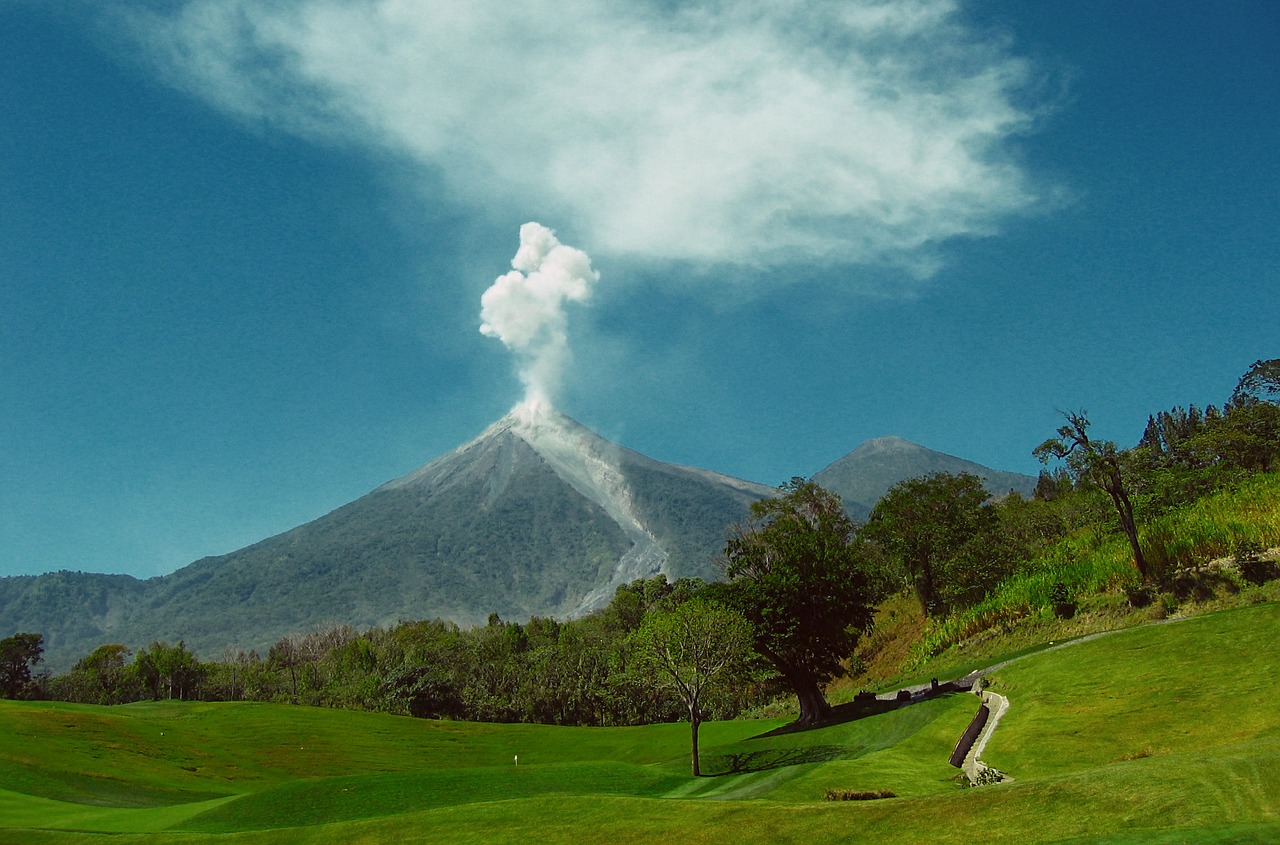
Nature have provided us with fascinating landforms and features. The most often adored landforms are volcanoes. Like the perfect cone structure of Mayon Volcano in the Philippines or Mount Fiji in Japan, people look at their beauty and wonder with great appreciation to nature.
Volcanoes are mountains with a very disastrous nature. Their only difference is their geothermal activity. All mountains has this, but volcanoes geothermal activity are highly active and have occasional destructive behavior that everyone wants to know.
In school, we are taught that there are two kinds of volcanoes. Dormant and inactive Volcanoes and active Volcanoes. Dormant or inactive volcanoes are like mountains that you can see from a distant which do not erupt. The other type are the active volcanoes which occasionally erupt and cause damages to properties ad people lives.
We all know that volcanoes are located in a path called the Pacific Ring of Fire. If you’ll notice, volcanoes are like dots and the line that connects them together is the Pacific Ring of Fire. Most active volcanoes are strategically located in this path.
You can find the most destructive volcanoes in the countries around the Pacific Ocean like Indonesia, Japan, New Zealand and the Philippines. Hawaii and other islands around the Pacific are also rich in volcanic supplies.
Volcanic eruptions
For years, people have seen the destructive behavior and energy potential of volcanoes. A lot of people have lost their properties and loved ones to the raging molten lava of an erupting volcano. Others, suffer from the tremble of earthquakes that accompany every eruption which makes the disaster more catastrophic. Mud flows or Lahar can also occur if rain pours down over volcanic craters near an eruption.
Preparing for volcanic eruptions
Fortunately, volcanic eruptions do not happen all the time. Volcanoes takes time before it can accumulate enough lava or molten rocks to trigger and start an eruption.
We all learned to monitor indicators that can tell us when an eruption of a volcano is about to happen. Authorities have identified danger zone and can inform natives and residents within the zone and nearby areas if an eruption is eminent.
Volcanologists and seismologists can now advise people days or even months before the eruption and can provide warnings that people can act on. When a warning is issued to an area, people are expected to take the necessary precautions so their lives could be spared from the forthcoming disaster.
Below are some emergency and safety guidelines that could help anyone prepare for a volcanic eruption.
Volcanoes are truly one of nature’s most destructive forces. Being prepared for any volcanic eruptions can save lives. Living nearby an active volcano? You do not need to change address. All you need to do is be prepared to take precautionary measures when the volcano shows signs of eminent eruption. Listen to warnings and take action while you have time.
We want pictures and location of the lanforms around the world and we need your help. Click get started button below.
In Asia, China, India, Nepal, and Bhutan are home to one of the eight wonders of the world and one of the most beautiful mountains in the world, the Himalaya Mountains also called the Himalayas. Boasting as the world’s highest and most famous mountain peak, Mt. Everest. Within the verse of the ‘Kumarsambhava’, Sanskrit […]
Nature have provided us with fascinating landforms and features. The most often adored landforms are volcanoes. Like the perfect cone structure of Mayon Volcano in the Philippines or Mount Fiji in Japan, people look at their beauty and wonder with great appreciation to nature. Volcanoes are mountains with a very disastrous nature. Their only […]
Taal Volcano is the second most active volcano found in the province of Batangas. A complex volcano in the middle of Taal Lake and is often called an island within a lake, that is an island within a lake that is on an island as well as one of the lowest volcano in the […]
Mayon Volcano is one of the active volcanoes in the Philippines. Located in the southern part of Luzon about 473 kilometers (294 miles) from Makati Business District of the Philippines, Mount Mayon is the main landmark of the Province of Albay of Bicol Region. According to local folklore, the volcano was named after Daragang […]
The global temperature and weather is to a large extent a direct result of the sun’s effect to our planet. Together with the atmosphere and the rotation of the earth on its axis. The earth on which weather moves on has its own effect on the weather. The different landforms like mountains, volcanoes, plains, and the […]